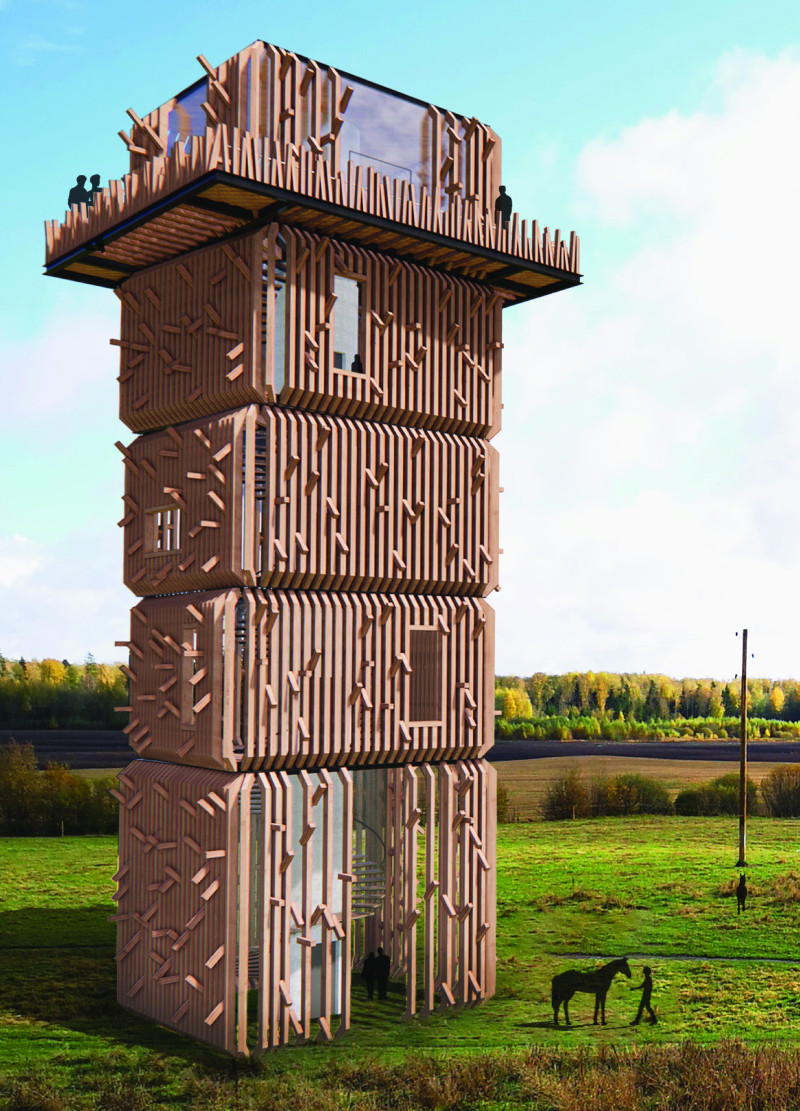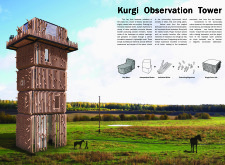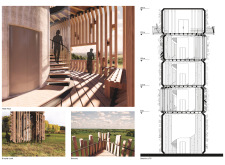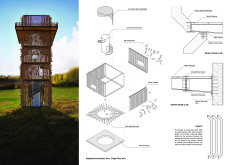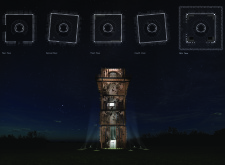5 key facts about this project
The Kurgi Observation Tower reinterprets the concept of a hay bale into an inviting structure situated in a scenic landscape featuring lakes, hills, and plains. This design serves as an observation point, allowing visitors to connect with the surrounding nature. The central idea revolves around playful forms, encouraging exploration and interaction while fostering a sense of belonging to the environment.
Structural Design and Form
The tower consists of blocks stacked in a slightly rotated manner, creating a lively visual presence. This arrangement results in a unique silhouette, standing out against the backdrop of nature while harmonizing with the landscape. Each block's position enhances the visual appeal and provides an engaging spatial experience, inviting visitors to connect with the architecture as they move upward.
Interior Experience
Inside the tower, visitors find a semi-enclosed space that feels open and inviting. The central circulation area is wrapped in lightweight mesh, allowing natural light to fill the interior. This design choice keeps a connection to the outdoors, offering views of the landscape and glimpses of local wildlife, including the rare Latvian Ardennes horses.
Visitor Amenities
Wooden benches are thoughtfully placed along the ascent, providing spots for visitors to rest and take in their surroundings. Each level reveals different views, making the journey to the top enjoyable. The observation area leads to a balcony with a panoramic view, where guests can admire the beauty of the natural preserve and appreciate the relationship between the tower and its environment.
Material Considerations
The tower's facade is made of CNC-milled wood planks, chosen for their practical benefits and natural appearance. The uniform profiles and careful notching highlight a focus on simplicity while ensuring the structure's functionality. This material selection contributes to a conversation between the tower and its site, enhancing the overall experience for visitors.
Light plays a significant role in the design, with shadows shifting across the facade throughout the day, adding depth to the structure's playful form.


